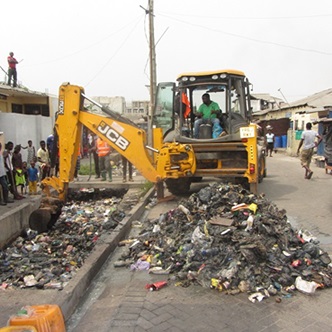1. Lack of Infrastructure
- Inadequate Facilities: Many communities lack basic sanitation infrastructure, including toilets, sewage systems, and waste disposal facilities.
- Rural Areas: Remote and rural areas often have limited access to proper sanitation facilities compared to urban areas.
2. Economic Constraints
- Poverty: High levels of poverty limit the ability of individuals and governments to invest in sanitation infrastructure and services.
- Limited Funding: Insufficient funding for sanitation projects from both local governments and international aid organizations.
3. Rapid Urbanization
- Overcrowding: Rapid urbanization leads to overcrowded cities, where sanitation systems are unable to keep up with the growing population.
- Informal Settlements: Many urban residents live in informal settlements or slums with little to no access to sanitation facilities.
4. Cultural Practices and Beliefs
- Traditional Practices: Some traditional beliefs and practices may not prioritize modern sanitation methods.
- Awareness and Education: Lack of awareness about the importance of sanitation and hygiene practices.
5. Government and Policy Issues
- Policy Implementation: Weak enforcement of sanitation policies and regulations.
- Corruption: Mismanagement and corruption can divert funds meant for sanitation projects.
Consequences of Poor Sanitation
1. Health Problems
- Waterborne Diseases: Poor sanitation leads to the contamination of water sources, causing diseases such as cholera, dysentery, and typhoid.
- Parasitic Infections: Open defecation and poor waste disposal can lead to the spread of parasites such as hookworm and schistosomiasis.
- Malnutrition: Repeated infections and illnesses can contribute to malnutrition, especially in children.
2. Environmental Degradation
- Pollution: Improper disposal of human waste leads to soil and water pollution.
- Ecosystem Damage: Contaminated water bodies can harm aquatic life and disrupt ecosystems.
3. Economic Impact
- Healthcare Costs: Increased illness due to poor sanitation results in higher healthcare costs for individuals and governments.
- Productivity Loss: Illnesses related to poor sanitation lead to absenteeism from work and school, reducing productivity and educational attainment.
4. Social Issues
- Gender Inequality: Women and girls are disproportionately affected, often bearing the responsibility for managing household water and sanitation needs.
- Safety Risks: Lack of access to safe sanitation facilities can expose women and girls to violence and harassment.
Solutions to Improve Sanitation
1. Infrastructure Development
- Building Facilities: Constructing and maintaining adequate sanitation facilities, such as toilets and sewage systems.
- Rural Focus: Ensuring that rural areas receive attention and resources for sanitation improvements.
2. Economic Investment
- Funding: Increasing investments from governments, international organizations, and private sectors in sanitation projects.
- Affordable Solutions: Developing low-cost sanitation technologies that are accessible to impoverished communities.
3. Education and Awareness
- Public Health Campaigns: Running campaigns to educate communities about the importance of sanitation and hygiene.
- School Programs: Incorporating sanitation education into school curriculums.
4. Policy and Governance
- Strong Policies: Developing and enforcing strong sanitation policies and regulations.
- Anti-Corruption Measures: Implementing measures to prevent corruption and ensure proper use of funds.
5. Community Engagement
- Local Involvement: Engaging local communities in the planning and implementation of sanitation projects.
- Empowerment: Empowering community leaders and organizations to take ownership of sanitation initiatives.
6. Technological Innovations
- Water Purification: Introducing affordable and sustainable water purification methods.
- Waste Management: Developing innovative waste management systems that are suitable for different environments.
Conclusion
Improving sanitation in African communities requires a comprehensive approach that addresses infrastructure, economic, cultural, and policy challenges. By investing in sanitation infrastructure, raising awareness, and engaging communities, significant progress can be made towards better health, environmental sustainability, and social well-being. Addressing poor sanitation is not only a matter of public health but also of human dignity and economic development.
